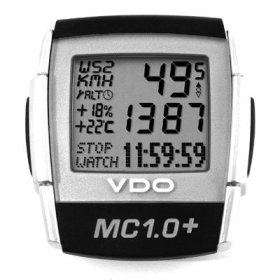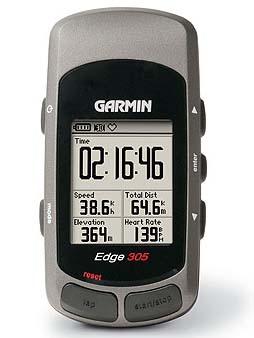in my report about the salzkammergut trophy 2006 i mentioned a new tool i have.
if you want to be a bit more serious about mountain biking, you need to have some sort of measurement tool. just to know what distance you covered, or what time you spent on the trails, more sophisticated instruments also show you the altitude & change, and heart rate.
i had a vdo mc 1.0, that did all the basic stuff a cycle meter is supposed to do, plus altitude. had, because one evening after a bit of a downhill i found that the vdo had (literally) jumped ship.

my old cycle meter. may it rest in peace somewhere in the grass on the taunus hills.
on the positive side, an unfortunate incident like this also offers a little upgrade possibility (i am sure this comes under ‘boys and their toys’). can’t be riding blind, can i?
i was first looking at the hac 4, but then i found that garmin had just released a new product. the edge 305 does measure time, distance, elevation, grade, and with a heart rate monitor and a cadence sensor you pretty much know everything there is to know.. since the edge is a gps-based instrument you get a few other goodies, like a virtual training partner (i.e. you can race against against your own earlier recorded performance on the same course), or the option to take you home in case you get terribly lost in the bush.

you can then upload the data either to garmin’s own ‘training center’ software, or to motion based, a web application, which offers neat features, like a link to google earth.
so far i am pretty pleased with the edge. some users complain that the firmware still has plenty of bugs (current firmware version is 2.70, so garmin has found some issues, too), and some functions are a bit unreliable. this goes mainly for the grade functions, which is jumping all over the place (not enough smoothing), and the speed, when you are under dense tree cover.
on the other hand i have to say that i am pretty impressed with the sirf 3 gps receiver: the edge hardly ever looses track of its position, which was not the case for some of the previous gps generations.
